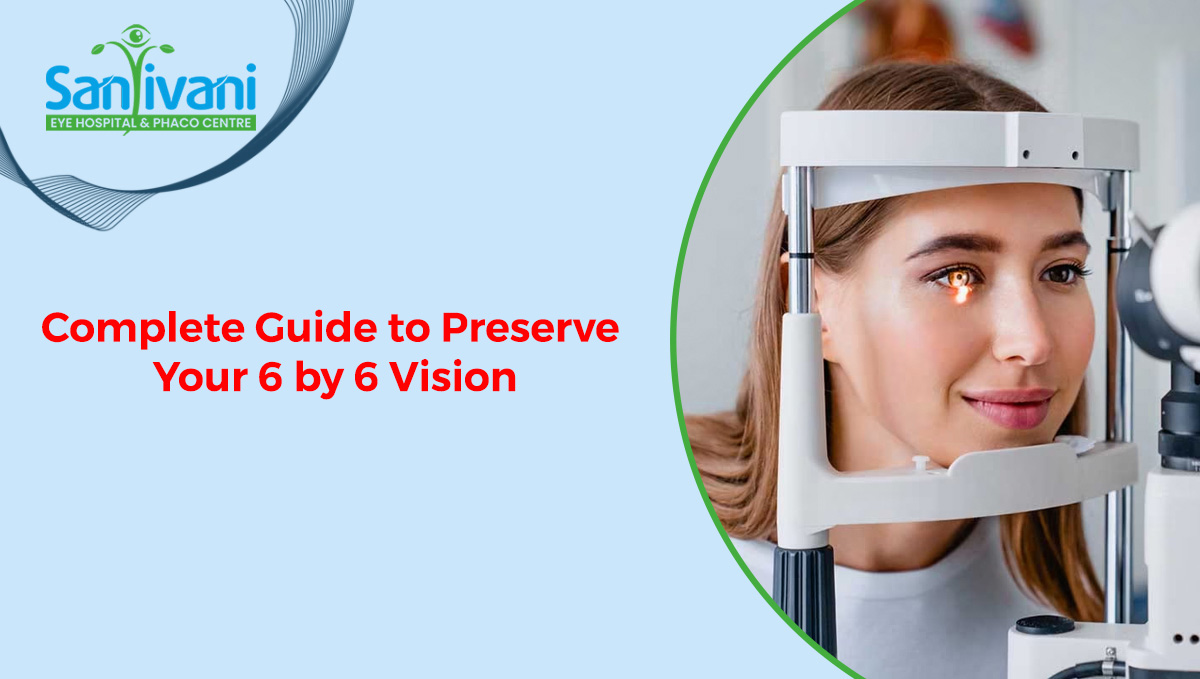
Guide to Maintaining Your 6-by-6 Vision
Guide to Maintaining Your 6-by-6 Vision
One of the most vital senses that we rely heavily on in our daily lives is sight. The best way to maintain the functionality of your eyes throughout your lifetime is to take care of them. Your eyesight can be protected by leading a healthy lifestyle and taking specific precautions.
Generally speaking, the best way to keep your 6 by 6 vision in the long run is to adopt healthy lifestyle habits and good eye care routines. These include eating a balanced diet, quitting smoking, getting regular exercise, and consuming more fruits and green vegetables, especially leafy vegetables. They contain a lot of antioxidants, which help prevent the damage that aging does to our bodies.
Generally speaking, the best way to keep your 6 by 6 vision in the long run is to adopt healthy lifestyle habits and good eye care routines. These include eating a balanced diet, quitting smoking, getting regular exercise, and consuming more fruits and green vegetables, especially leafy vegetables. They contain a lot of antioxidants, which help prevent the damage that aging does to our bodies.
1) Eat Right
Our nutritional intake has a significant impact on maintaining the health of our eyes. Thus, make sure you eat a healthy diet to maintain the health of both your body and your eyes.
In order to obtain the ideal daily dosage of vitamins and minerals, you must incorporate the foods listed below into your diet.
- wholesome fruits and vegetables,
- leafy green vegetables, like spinach,
- berries, in particular, have vivid and dark colors, particularly red and blue.
- Grapefruit, oranges, guavas, and other citrus fruits,
- Dry fruits, nuts, and seeds. Like walnuts, flaxseed, and almonds,
- foods high in protein. Dal (lentils), for instance—particularly Soya—milk and dairy products, beans,
2) Visit Your Eye Doctor Regularly
Whether they are 80 years of age or older, young children or the elderly should all have regular eye exams. At 40 years of age, or at the earliest opportunity for early signs and/or changes in vision, adults who do not exhibit any symptoms or risk factors for eye diseases are required to undergo a baseline screening for eye diseases. Based on the outcomes of the first screening, the optometrist will determine how often follow-up examinations should be scheduled. To find out how frequently they should have their eyes examined, anyone with symptoms or a family history of diabetes, high blood pressure, or eye disease should consult an eye specialist. Your 6-by-6 vision should be safe and clear, and your prescription for glasses or contact lenses should still be valid, according to an eye exam.
A thorough eye examination may consist of:
- Speaking of your medical history and that of your family
- Take vision tests to determine your nearsightedness, farsightedness, astigmatism (a curved cornea that causes blurriness in vision), and presbyopia (vision changes brought on by aging).
- tests to measure the synchronization of your eyes
- Tests on the optic nerve and eye pressure to detect early indicators of glaucoma
- It aids in determining whether you are at risk for eye diseases or already have them. It is particularly helpful for conditions like glaucoma, which don't show symptoms until much later in life. Microscopic and external examination of the eyes both before and after dilation.
- Early on, any disease can be contracted. Preventing problems before they arise can help you maintain your vision.
If you must go outside during the day, wear sunglasses that completely block the sun's damaging UV rays from entering your eyes. Make sure the UV-A and UV-B rays are blocked by your sunglasses.
Wear safety goggles or protective glasses if you use airborne objects or hazardous materials at work or home. Make sure your eyes are adequately protected if you handle fireworks or use devices that could cause a fire.
Wearing the right eye protection is essential to avoiding injuries when doing house repairs, gardening, and cleaning.
Additionally, wear eye protection when playing sports like baseball and hockey. These may also result in damage to the eyes. Your 6 by 6 vision will be protected by sports goggles with polycarbonate lenses or helmets with face masks.
Cleaning your glasses on a daily basis is the best defense against scratches and other damage to your eyewear. The longevity, functionality, and aesthetics of your eyeglass lenses can all be improved by protecting the lens coatings. Whether you use bifocal or single vision lenses, this is true.
It is not recommended to clean your glasses with cloth, paper towels, napkins, tissues, or toilet paper, especially if the lenses are dry. Saliva is sometimes used to moisten and clean lenses, but this is a very improper method.
Consider using individually packaged, pre-moistened disposable lens cleaning wipes for thoughtful cleaning and proper maintenance of your glasses. These are made especially to clean lenses in glasses.
If you experience eye strain from working closely or from staring at a computer screen all the time, you should adhere to the 20-20-20 rule. Every 20 minutes, take a quick glance away from your work and focus on something 20 feet away for 20 seconds.